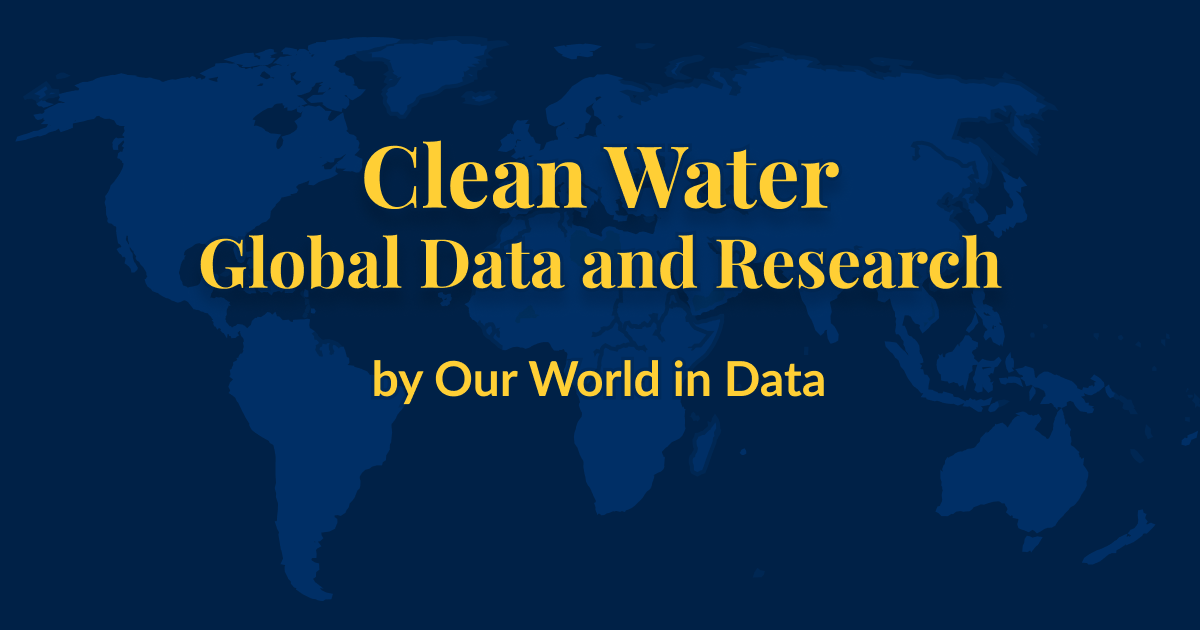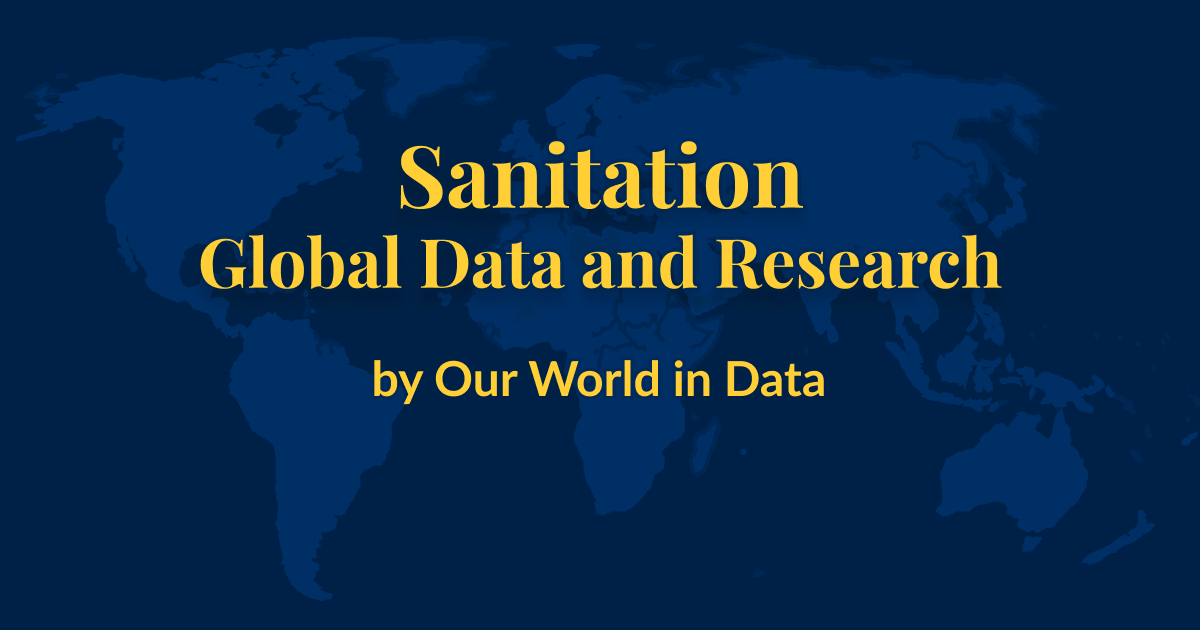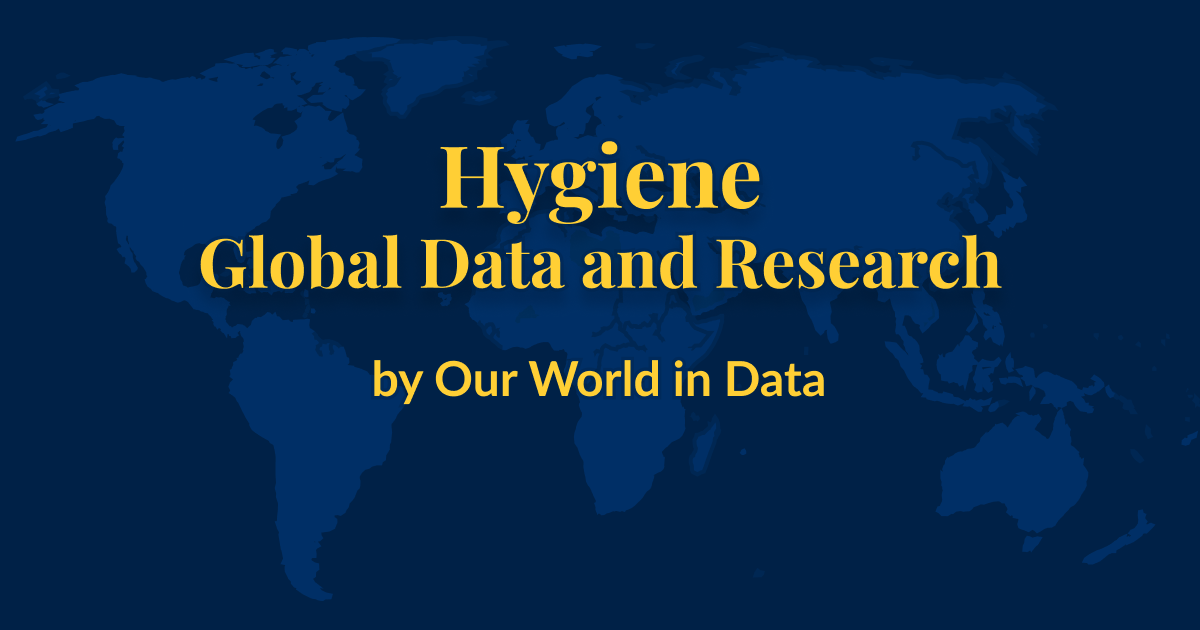Clean Water and Sanitation
Having access to and using safe drinking water, sanitation, and handwashing is a basic human need.
Individuals not using these facilities increases the risk of disease and malnutrition and is attributed to millions of deaths each year.
The world has made significant progress in increasing their availability. In the past, infectious diseases were the leading cause of death in most countries. They’ve fallen dramatically in high and middle-income countries – partly due to increased usage of clean water and sanitation.
But there is still more work to do. It is still a major problem in low-income countries.
On this page, you can find all of our data on water, sanitation, and handwashing.
Related topics
- Diarrheal Diseases
- Causes of Death
- Water Use and Stress
Explore our data on Clean Water and Sanitation

Clean Water
Clean and safe water is essential for good health. How did access change over time? Where do people lack access?
Hannah Ritchie, Fiona Spooner and Max Roser

Sanitation
Safe sanitation is essential to reduce deaths from infectious diseases, prevent malnutrition, and provide dignity.
Hannah Ritchie, Fiona Spooner and Max Roser

Hygiene and Handwashing
How many people lack access to basic handwashing facilities?
Hannah Ritchie, Fiona Spooner and Max Roser
More articles on Clean Water and Sanitation
The world is making progress on clean water and sanitation, but is far behind its target to ensure universal access by 2030
Interactive Charts on Clean Water, Sanitation and Hygiene
- Share using safely managed drinking water
- Share of the population using safely managed sanitation facilities
- Share of population with access to basic handwashing facilities
- Death rate attributable to unsafe water, sanitation, and hygiene
- Death rate from unsafe sanitation IHME, age-standardized
- Death rate from unsafe water sources IHME, age-standardized
- Deaths attributed to unsafe sanitation
- Deaths attributed to unsafe water sources
- Share of deaths attributed to unsafe sanitation
- Share of deaths attributed to unsafe water sources
- Share of the population with access to handwashing facilities
- Average ammonium concentration in freshwater
- Average nitrate concentration in freshwater
- Average phosphorus concentration in freshwater
- Bathing sites with excellent water quality
- Death rate from no access to hand-washing facilities IHME, crude
- Deaths attributed to lack of access to handwashing facilities
- Number of people in rural areas without basic handwashing facilities
- People not using an improved water source
- People not using improved sanitation facilities
- People not using safe drinking water facilities
- People not using to safely managed sanitation
- People using at least a basic drinking water source
- People without basic handwashing facilities
- Population with basic handwashing facilities, urban vs. rural
- Rate of deaths attributed to no access to handwashing facilities IHME, age-standardized
- Rate of deaths attributed to unsafe sanitation IHME, crude
- Rate of deaths attributed to unsafe water sources IHME, crude
- Share of people practicing open defecation
- Share of population using at least a basic drinking water source
- Share of the population not using an improved water source
- Share of the population not using improved sanitation
- Share of the population using at least basic sanitation services
- Share of the population using drinking water facilities
- Share of the population using sanitation facilities
- Share of the rural population using at least basic water services
- Share of urban population using at least basic water services
- Death rate from unsafe water vs. GDP per capita
- Diarrheal diseases death rate in children vs. access to basic handwashing facilities
- Drinking water service usage
- Drinking water services usage in rural areas
- Has country already reached SDG target for usage of improved sanitation facilities?
- Has country already reached SDG target on improved water access?
- Improved water sources vs. GDP per capita
- Open defecation in rural areas vs. urban areas
- Sanitation facilities usage
- Sanitation facilities usage in rural areas
- Sanitation facilities usage in urban areas
- Share of population with improved sanitation vs. GDP per capita
- Share of rural population with access to basic handwashing facilities
- Share of the rural population using at least basic sanitation services
- Share of urban population using at least basic sanitation services
- Share of urban vs. rural population using at least basic drinking water
- Share of urban vs. rural population using at least basic sanitation
- Share of urban vs. rural population using safely managed drinking water
- Share of urban vs. rural population using safely managed sanitation facilities
- Total official financial flows for water supply and sanitation, by recipient
- Urban improved water usage vs. rural water usage
- Usage of at least basic sanitation facilities
- Usage of improved water sources
Chart 1 of 60
Cite this work
Our articles and data visualizations rely on work from many different people and organizations. When citing this topic page, please also cite the underlying data sources. This topic page can be cited as:
Hannah Ritchie, Fiona Spooner and Max Roser (2021) - “Clean Water and Sanitation” Published online at OurWorldInData.org. Retrieved from: 'https://ourworldindata.org/clean-water-sanitation' [Online Resource]
@article, title = , journal = , year = , note = >
Reuse this work freely
All visualizations, data, and code produced by Our World in Data are completely open access under the Creative Commons BY license. You have the permission to use, distribute, and reproduce these in any medium, provided the source and authors are credited.
The data produced by third parties and made available by Our World in Data is subject to the license terms from the original third-party authors. We will always indicate the original source of the data in our documentation, so you should always check the license of any such third-party data before use and redistribution.
Our World in Data is free and accessible for everyone.
Help us do this work by making a donation.
Licenses: All visualizations, data, and articles produced by Our World in Data are open access under the Creative Commons BY license. You have permission to use, distribute, and reproduce these in any medium, provided the source and authors are credited. All the software and code that we write is open source and made available via GitHub under the permissive MIT license. All other material, including data produced by third parties and made available by Our World in Data, is subject to the license terms from the original third-party authors.
Please consult our full legal disclaimer.
Our World In Data is a project of the Global Change Data Lab, a registered charity in England and Wales (Charity Number 1186433).




